Regular practice of yoga assists in the release of tension and stress in the body, a major cause of headache in men and women, says Ira Trivedi, wellness expert and founder of Yog Love.
If you've ever had a migraine, you know it's not like any other headache.
The throbbing pain on one side of the head is frequently accompanied with nausea, light sensitivity, and dizziness, as well as worry.
While medication can help with migraine symptoms, mindfulness techniques like yoga can also aid.
A pounding head can prevent you from sleeping at night or, worse, cause you to miss an essential meeting.
When you have a headache, whether it's from dehydration, stress, tension, a hangover, or something else, all you want to do is get rid of it as soon as possible.
While painkillers can give you temporary relief, yoga may be able to help you calm down and get rid of your headache for good.
Regular practice of yoga assists in the release of tension and stress in the body, a major cause of headache in men and women.
Presenting 10 yoga asanas to reduce migraines and headaches.
Vajrasana
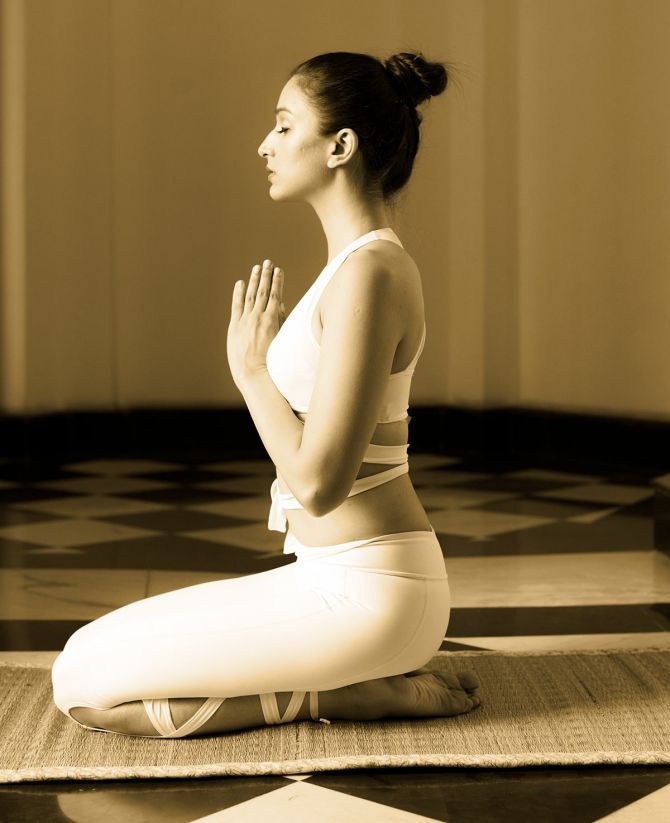
How to do it
- Sit with your legs tucked under your body.
- Your spine should be erect with your knees close to each other.
- Breathe in deeply, for a count of 1, 2, 3, 4, 5, 6, 7, 8. Breathe out completely for a count of 1, 2, 3, 4, 5, 6, 7, 8. While breathing, focus on the energy point between your forehead.
Balasana (Child's Pose)
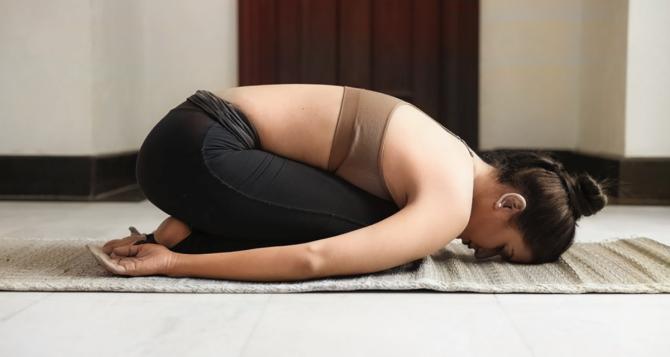
How to do it
- Begin in a kneeling pose, sitting on your heels.
- Inhale deeply and bring your forehead to the ground.
- Your arms should be placed on either side of your body. Breathe deeply.
- Bring your right arm underneath your left shoulder. Look to your right fingers.
- Repeat on the other side.
Janu Sirsasana (Head to Knee Pose)
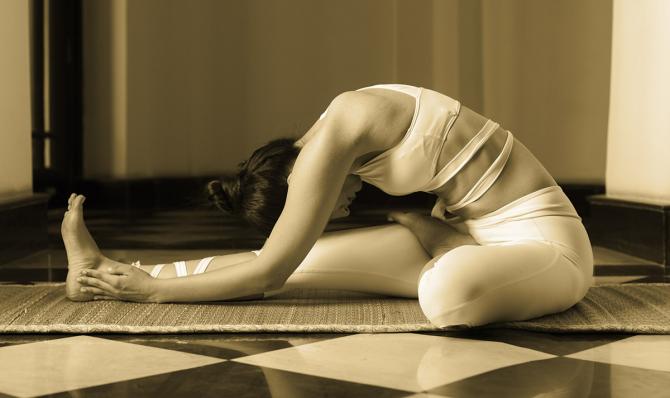
How to do it
- Sit on the floor with your right leg extended forward.
- Bend your left knee out to your side. Make sure your left foot is pressing into your right inner thigh.
- Inhale deeply and raise your arms above.
- As you exhale, bend at your hips, folding forward towards your right leg.
- Hold your outstretched right foot with your hands, stretching forwards.
- Hold this pose for a few seconds and then relax.
- Repeat with your left leg.
Setu Bandha Sarvangasana (Bridge Pose)
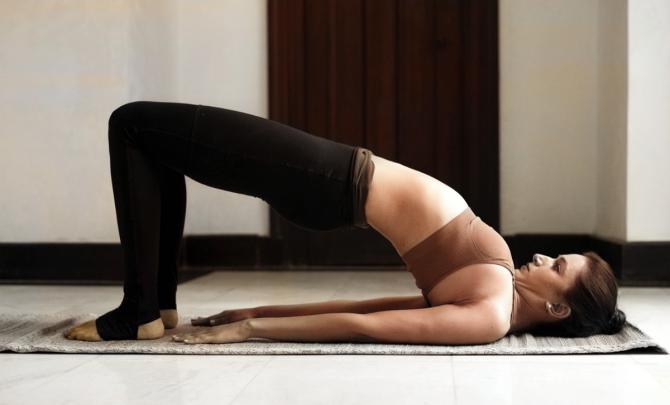
How to do it
- Lying on your back, bend both your knees and place your feet flat on the floor, hip-width apart.
- Bring your arms alongside your body with your palms facing downwards.
- Inhale, press your feet to the floor and lift your hips up.
- Bring your hands onto your lower back for support if you wish.
- Stay here for 10 seconds and continue to breathe.
- Exhale and come down.
Marjariasana (Cat-Cow stretch)

How to do it
- Get down on your knees and palms. Keep your palms shoulder-width apart and knees hip-width apart.
- Inhale and raise your chin upwards as you tilt your head backward. Lower your spine so it is curving inwards towards the floor.
- Hold this position for a moment.
- Exhale, bringing your chin down, and also arch your back upwards.
- Hold and slowly relax.
Adho Mukha Svanasana (Downward Dog Pose)
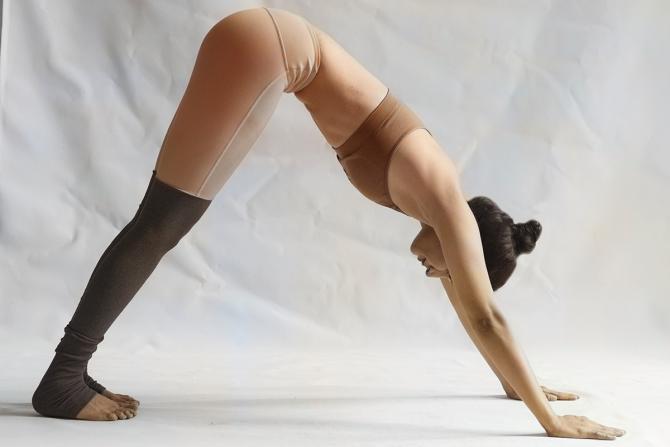
How to do it
- Come on your hands and your knees. Keep your knees directly below your hips and hands a little in front of the shoulders.
- Lift your knees from the ground, making the legs straight and pushing your hips upwards and back. Keep your arms straight with palms flat on the ground. Your head should be between the arms.
- Your body should form an upside-down V shape.
- Breathe deeply and hold this pose for a few moments before relaxing.
Supta Matsyendrasana (Supine Twist)

How to do it
- Lie on your back with your arms on either side of your body.
- Bending your right knee at a 90-degree angle, place it on the floor next to your left knee.
- Extending your arms out to the side, gaze towards your right hand.
- Exhale and repeat on the other side.
Kapalabhati Pranayama
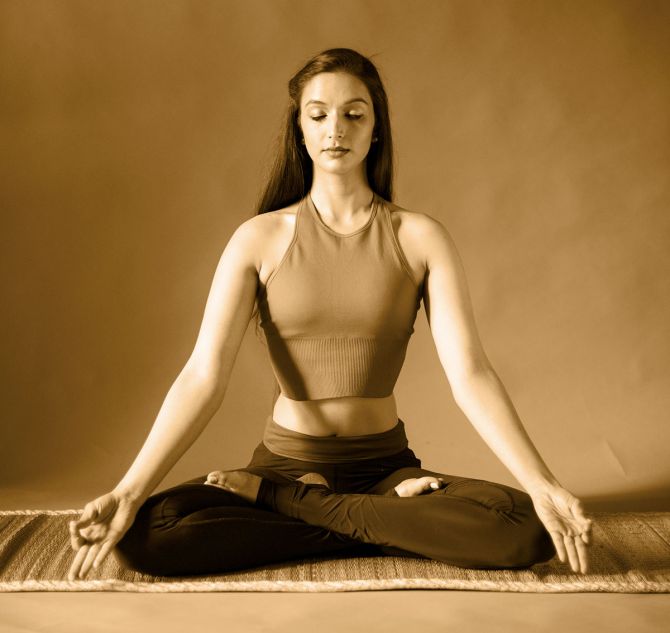
How to do it
- Sit up straight in a comfortable posture.
- Resting both hands on the knees, bring together your thumb and your forefinger in Gyan mudra.
- Close your eyes and then take a few deep breaths.
- Inhale deeply (only when you begin) and simultaneously contract the abdominal muscles. Exhale through both nostrils, forcing the air out.
- Inhalation should take place passively by the automatic relaxation of the abdominal muscles. It should be like spontaneous recoil, involving no active effort.
- After completing 20 rapid breaths this way, stop and resume normal breathing pace. This is one complete round.
Shavasana (Corpse Pose)

How to do it
- Lie down on your back with your legs apart. Keep your palms a little away from your body and face in an upwards direction. Make sure that you are comfortable.
- Close both your eyes.
- Focus on your body and breathing while you relax. Breathe deeply and slowly.
- Hold this position for 10 minutes.
Yog Nidra
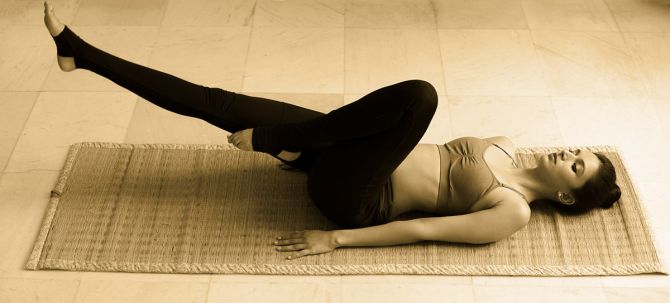
How to do it
- Lie down in Shavasana. Spend a few minutes paying attention to your breath and relaxing your body and mind.
- You now have to focus on each part of your body, starting from your toes and moving up to your head.
- Focus on your toes. Bring your attention to your toes. Scrunch them up. Release.
- Now tense up both your feet. Life them an inch off the ground. Bring them down. Relax.
- Focus on the muscles in your calves. Tense them up. Relax.
- Focus on your knees. Bring your attention to your knees. Relax.
- Focus on both your legs. Tense them up. Lift them an inch off the ground. Relax.
- Focus on your tummy. Tense up all your tummy muscles. Relax.
- Focus on your back. Feel your back muscles. Relax.
- Scrunch your shoulders up to your ears. Tense them up. Relax.
- Make your hands into tight fists. Squeeze all the muscles in your arms. Raise your arms an inch off the ground. Relax.
- Close your eyes. Scrunch your nose, forehead, and lips, making a ball of your face. Open your mouth, make a sighing sound. Relax.
- Take a few seconds to pay attention to every part of your body and relax. Stay in Shavasana for a few minutes. Relax.
These asanas are meant to stretch and open specific regions of your body while also increasing blood flow to your head.
Practice these asanas every day for maximum benefit.











